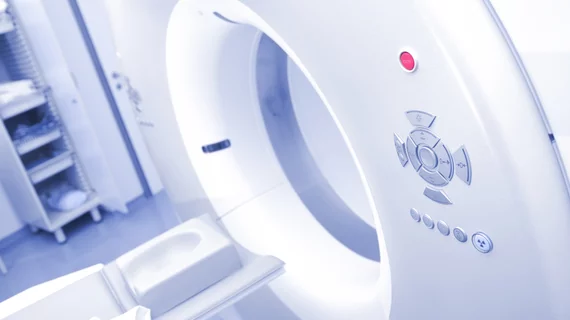Experts have theorized that there is a direct relationship between an individual’s amount of physical activity and the development of changes in the shoulder or hip. A team of UK researchers sought to test this theory by comparing MRI findings from rugby players and ballet dancers to healthy participants, sharing their findings in Clinical Radiology.
Athletes frequently complain of hip pain. In fact, hip arthroplasty rates are six times higher in retired elite rugby players compared to age-matched controls, and the prevalence of hip and groin injury in professional dancers is as high as 27%, the researchers noted. These findings, however, also occur in those without symptoms, with wide-ranging variation in the published literature.
“The aim of this study was to identify differences in the prevalence of labral tears, articular cartilage lesions, and other MRI hip findings in matched asymptomatic male subjects undertaking contrasting types of athletic activity,” wrote T. Blankenstein, Chapel Allerton Hospital’s Musculoskeletal Center X-ray Department, and colleagues.
To do this, 11 pro rugby players, 10 professional ballet dancers and 10 controls performed an activity, completed a symptom questionnaire and underwent 3T MRI on their dominant hip.
After two musculoskeletal radiologists assessed each scan, the researchers reported a labral tear prevalence rate of 87% with “no significant difference” between the groups. Paralabral cysts were most prevalent in ballet dancers (50%) compared to controls (10%) and ruby players (0%). Ballet dancers had “significantly greater” superior capsular thickness (5.3 millimeters) compared to rugby players (3.8mm) and controls (3.8mm).
“Despite the assumed differences in the activity levels between the athletes and the control group, the rates of labral damage and acetabular cartilage loss were not significantly different, challenging the theory of a direct relationship between volume of physical activity and the development of labral changes,” the researchers wrote.
The increased superior hip joint capsule thickness in ballet dancers may be due to an “adaptive physiological response” to the wide range of motion many dancers experience, the authors noted, but would require further investigation to confirm.
“Further work should look to follow-up both athletes and non-athletes over extended time periods, including into retirement, in order to help to inform our understanding of the potential progressive nature of these findings and their clinical relevance,” the team concluded.

